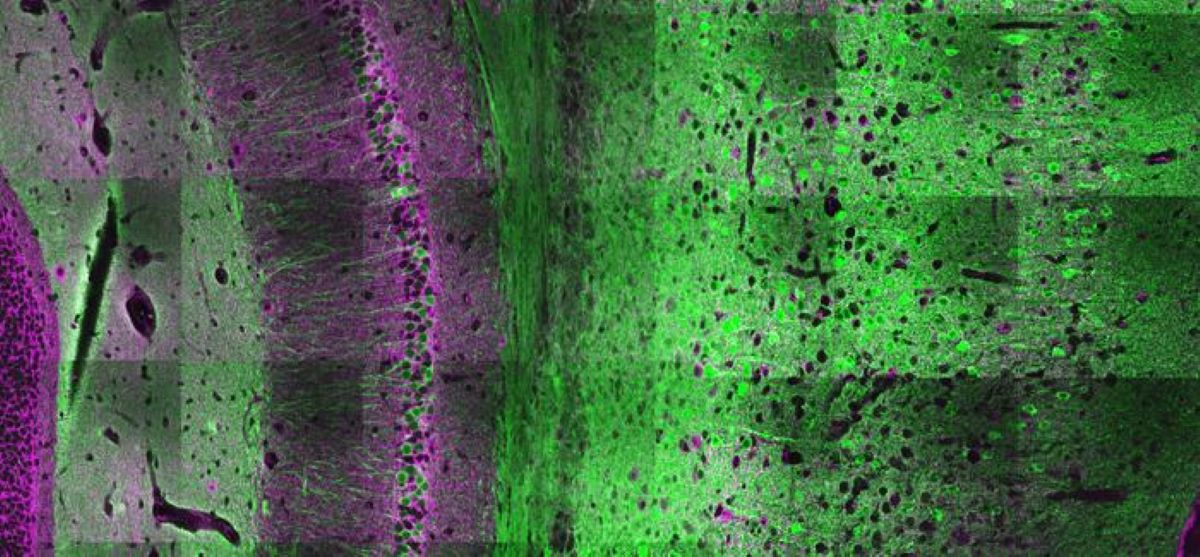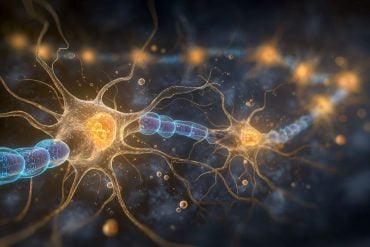Summary: Neuroscientists have discovered how the CP-AMPA receptor in brain cells influences neuron selectivity in response to sensory stimuli. This receptor type makes neurons less selective, which may help explain certain brain disorders like autism and epilepsy.
By manipulating these receptors in mice, researchers observed changes in visual and spatial processing. These findings could lead to new treatments for conditions tied to misfiring neurons, including intellectual disabilities.
Key Facts:
- CP-AMPA receptors reduce neuron selectivity, impacting sensory response.
- Mutations in related proteins are linked to autism and intellectual disability.
- Manipulating these receptors in mice improved neuron selectivity and stability.
Source: Johns Hopkins Medicine
Neuroscientists from Johns Hopkins Medicine say they have determined how a brain cell surface molecule shapes the way certain neurons behave.
The research, published October 2 in Nature, reveals how a molecule, the calcium permeable (CP)-AMPA receptor, suppresses a specific neuron’s ability to pay attention to specific external cues, such as your friend’s earrings, according to the study in genetically-engineered mice.

Understanding why some neurons are less “selective” about their response to certain cues may also help researchers study schizophrenia, epilepsy and autism — conditions marked by the faulty processing of external cues and misfirings of neurons in the mammalian brain.
“We’ve discovered that the calcium permeable subtype of AMPA receptors has an added role of suppressing the selectivity of a given neuron,” says Ingie Hong, Ph.D., first author and an instructor in neuroscience at the Johns Hopkins University Medicine.
“Until now, the role of these specific receptors in the wider mammalian brain as it functions in everyday life has been a mystery.”
Along with Hong, the research was led by Richard Huganir, Ph.D., Bloomberg Distinguished Professor of Neuroscience and Psychological and Brain Sciences and director of the Solomon H. Snyder Department of Neuroscience at the Johns Hopkins University School of Medicine, who has been studying AMPA receptors for more than 40 years.
AMPA receptors are critical to the fast transfer of information and memory formation in the brain, such as hearing and remembering a person’s name. The subtype of AMPA receptors in this study, CP-AMPA receptors, act as a “gate” that lowers the selectivity of parvalbumin (PV) neurons, which are inhibitory and thereby cast unselective inhibition to nearby neurons, the researchers say.
“Selective neurons will respond to something really specific, for example, your grandfather’s mustache, whereas less selective neurons will respond to different faces or people as well,” Hong says.
“We’ve been looking for the mechanisms and molecules that control this specificity, or selectivity, and how it goes awry in conditions such as autism and epilepsy, where excitatory neurons can become overstimulated.”
The researchers also found that mutations of GluA2, a protein subunit within the CP-AMPA receptor, are associated with intellectual disabilities.
“Human mutations in the GluA2 subunit of the AMPA receptors, which regulates the calcium permeability of the receptor, can lead to intellectual disability and autism,” says senior author Huganir. “This suggests tight control of AMPA receptor calcium permeability is essential for human cognition.”
Specifically, the investigators focused on CP-AMPA receptors in two distinct areas of the brain, the visual cortex, where neurons process visual information, and the hippocampus, where neurons respond to “where you are, where you are headed, or where you have been,” Hong says.
To conduct their research, the scientists developed novel adeno-associated virus vectors to replace calcium permeable AMPA receptors with impermeable counterparts and express them in the mouse brain. They say they hope these vectors can help treat disorders that arise from AMPA receptor mutations in the future.
To map out PV neuron selectivity, the scientists used advanced imaging techniques to observe neuron structure and activity deep within genetically engineered mice brains while showing them video stimuli.
“In most cases, we found that these PV neurons, which are typically less selective, became more selective to visual stimuli as well as spatial location when we swapped out CP-AMPA receptors for impermeable molecules, making inhibitory neurons act more like excitatory neurons,” Hong says.
The researchers say the high amount of CP-AMPA receptors in PV neurons is well-conserved across many species of mammals, including humans.
“Making neuron inhibition less selective makes our neural circuits more efficient than species that don’t have this molecular feature,” Hong says. “It probably also means that our neural networks are more stable.”
Hong says the new research may also have implications for machine learning used in artificial intelligence.
“In machine learning, there are many computerized ‘artificial’ neurons that are trained to be very selective or less selective,” he says. “We’re trying to find how specific and less specific units can work together to give us smarter machines and smarter AI.”
Up next, the scientists intend to study other critical molecules known to change cognition.
In clinical neuroscience, Hong says, a better understanding of which brain molecules contribute to biased neuronal computations in patients could advance the search for drug therapy targets in psychiatric disorders with a genetic component, a budding field Hong calls “neurocomputational therapeutics.”
In addition to Hong and Huganir, other scientists who contributed to this study are Juhyun Kim, Dong Won Kim, Richard C. Johnson, Nathachit Limjunyawong, Zhuonan Yang, David Cheon, Taeyoung Hwang, Amit Agarwal, Xinzhong Dong, Seth Blackshaw, Dwight E. Bergles and Solange P. Brown of Johns Hopkins; Thomas Hainmueller, Thibault Cholvin and Marlene Bartos of University of Freiburg; Joram Keijser and Henning Sprekeler of Technical University of Berlin; Soo Hyun Park and David A. Leopold of the National Institute of Mental Health; Fenna M. Krienen of Princeton University; and Steven A. McCarroll of Harvard Medical School.
Funding: Funding for this research was provided by National Institutes of Health grants R37NS036715 and U01DA056556.
About this sensory neuroscience research news
Author: Alexandra Carolan
Source: Johns Hopkins Medicine
Contact: Alexandra Carolan – Johns Hopkins Medicine
Image: The image is credited to David Cheon and Ingie Hong
Original Research: Open access.
“Calcium-permeable AMPA receptors govern PV neuron feature selectivity” by Ingie Hong et al. Nature
Abstract
Calcium-permeable AMPA receptors govern PV neuron feature selectivity
The brain helps us survive by forming internal representations of the external world. Excitatory cortical neurons are often precisely tuned to specific external stimuli. However, inhibitory neurons, such as parvalbumin-positive (PV) interneurons, are generally less selective.
PV interneurons differ from excitatory neurons in their neurotransmitter receptor subtypes, including AMPA (α-amino-3-hydroxy-5-methyl-4-isoxazole propionic acid) receptors (AMPARs).
Excitatory neurons express calcium-impermeable AMPARs that contain the GluA2 subunit (encoded by GRIA2), whereas PV interneurons express receptors that lack the GluA2 subunit and are calcium-permeable (CP-AMPARs).
Here we demonstrate a causal relationship between CP-AMPAR expression and the low feature selectivity of PV interneurons.
We find low expression stoichiometry of GRIA2 mRNA relative to other subunits in PV interneurons that is conserved across ferrets, rodents, marmosets and humans, and causes abundant CP-AMPAR expression. Replacing CP-AMPARs in PV interneurons with calcium-impermeable AMPARs increased their orientation selectivity in the visual cortex.
Manipulations to induce sparse CP-AMPAR expression demonstrated that this increase was cell-autonomous and could occur with changes beyond development.
Notably, excitatory–PV interneuron connectivity rates and unitary synaptic strength were unaltered by CP-AMPAR removal, which suggested that the selectivity of PV interneurons can be altered without markedly changing connectivity.
In Gria2-knockout mice, in which all AMPARs are calcium-permeable, excitatory neurons showed significantly degraded orientation selectivity, which suggested that CP-AMPARs are sufficient to drive lower selectivity regardless of cell type.
Moreover, hippocampal PV interneurons, which usually exhibit low spatial tuning, became more spatially selective after removing CP-AMPARs, which indicated that CP-AMPARs suppress the feature selectivity of PV interneurons independent of modality.
These results reveal a new role of CP-AMPARs in maintaining low-selectivity sensory representation in PV interneurons and implicate a conserved molecular mechanism that distinguishes this cell type in the neocortex.






